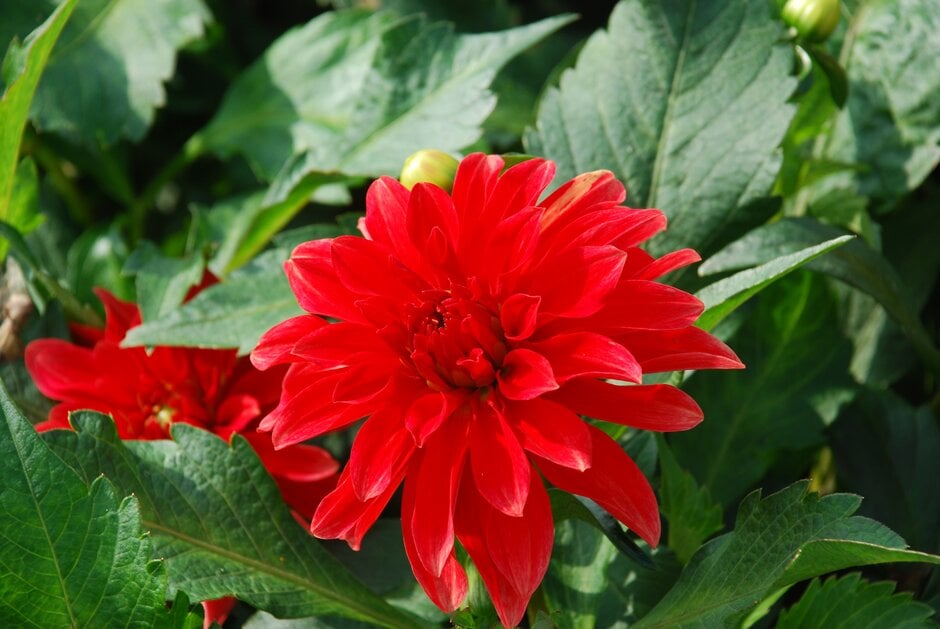Size
Ultimate height
0.5–1 metresTime to ultimate height
1–2 yearsUltimate spread
0.5–1 metresGrowing conditions
Moisture
Moist but well–drainedpH
Acid, Alkaline, NeutralColour & scent
| Stem | Flower | Foliage | Fruit | |
| Spring | Green | |||
|---|---|---|---|---|
| Summer | Red | Green | ||
| Autumn | Red | Green | ||
| Winter |
Position
- Full sun
Aspect
South–facing or West–facing
Exposure
Sheltered Hardiness
H3Botanical details
- Family
- Asteraceae
- Native to GB / Ireland
- No
- Foliage
- Deciduous
- Habit
- Clump forming
- Genus
Dahlia are tuberous rooted perennials with pinnately divided leaves and showy flowerheads, double in many cultivars, in summer and autumn
- Name status
Accepted
- Horticultural Group
- Double Orchid dahlias have fully double flowerheads that show no central disc and have narrowly lanceolate ray florets that are pinched and slightly twisted at the outer ends giving a distinctive appearance
How to grow
Cultivation
Grow in fertile, humus-rich, well-drained soil, enriched with organic matter, in full sun. Pinch out growing tips to encourage bushy plants and stake - see staking perennials. Water if needed in dry periods. Lift and store tubers in autumn to replant, or use as a source of cuttings, in spring. See dahlia cultivation and our video How to plant dahlia tubers and care tips
Propagation
Propagate by softwood cuttings taken in spring from shoots from stored tubers, or divide the tubers ensuring each division has a viable bud
Suggested planting locations and garden types
- City and courtyard gardens
- Cottage and informal garden
- Patio and container plants
- Cut flowers
- Flower borders and beds
Pruning
Deadhead to prolong flowering
Pests
May be susceptible to aphids, leaf miners, glasshouse red spider mite, capsid bug, caterpillars and slugs. Earwigs sometimes damage blooms
Diseases
May be susceptible to powdery mildews in dry conditions, grey moulds and other fungal rots in wet weather, a virus, and fungal rots in storage
Get involved
The RHS is the UK’s gardening charity, helping people and plants to grow - nurturing a healthier, happier world, one person and one plant at a time.
